Up Next

During Formula 1’s coronavirus-forced hiatus, The Race will be revisiting great races from the past. For each grand prix we select, we will run a story on Friday setting the stage, a qualifying report on Saturday and a Sunday race analysis. These will not be repeats of old articles, but fresh retrospectives of these events
There has never been, and there probably never will be, a Formula 1 race as confusing as the 2003 Brazilian Grand Prix.
Four safety car periods, a car graveyard at Turn 3 that claimed Michael Schumacher and Juan Pablo Montoya, a ludicrous wet tyre rule and a ferocious shunt for Fernando Alonso that he was fortunate to escape from without injury created the conditions of a race for the ages, with the final result not decided for six days.
The upshot was a victory-that-wasn’t for Giancarlo Fisichella turning into a victory-that-shouldn’t have been for Kimi Raikkonen that eventually became a victory-that-really-was-after-all for Fisichella. The uncompetitive Jordan that pulled up in parc ferme amid the confusion and promptly caught fire really was the winner of this astonishing saga.
There were also litany of drivers who ended the race with ‘woulda, coulda, shoulda’ won stories.
These ranged from the heartbreaking, with home hero Rubens Barrichello suffering from a malfunction in the system monitoring the fuel load and ran dry while leading, to the unfortunate, with David Coulthard pitting from the lead just before Mark Webber crashed and shed the wheel that Alonso would collect, to the improbable, with even Minardi’s Jos Verstappen on a trajectory that could conceivably have taken him to victory when he retired!
PART 1 – JORDAN’S WINNING STRATEGY
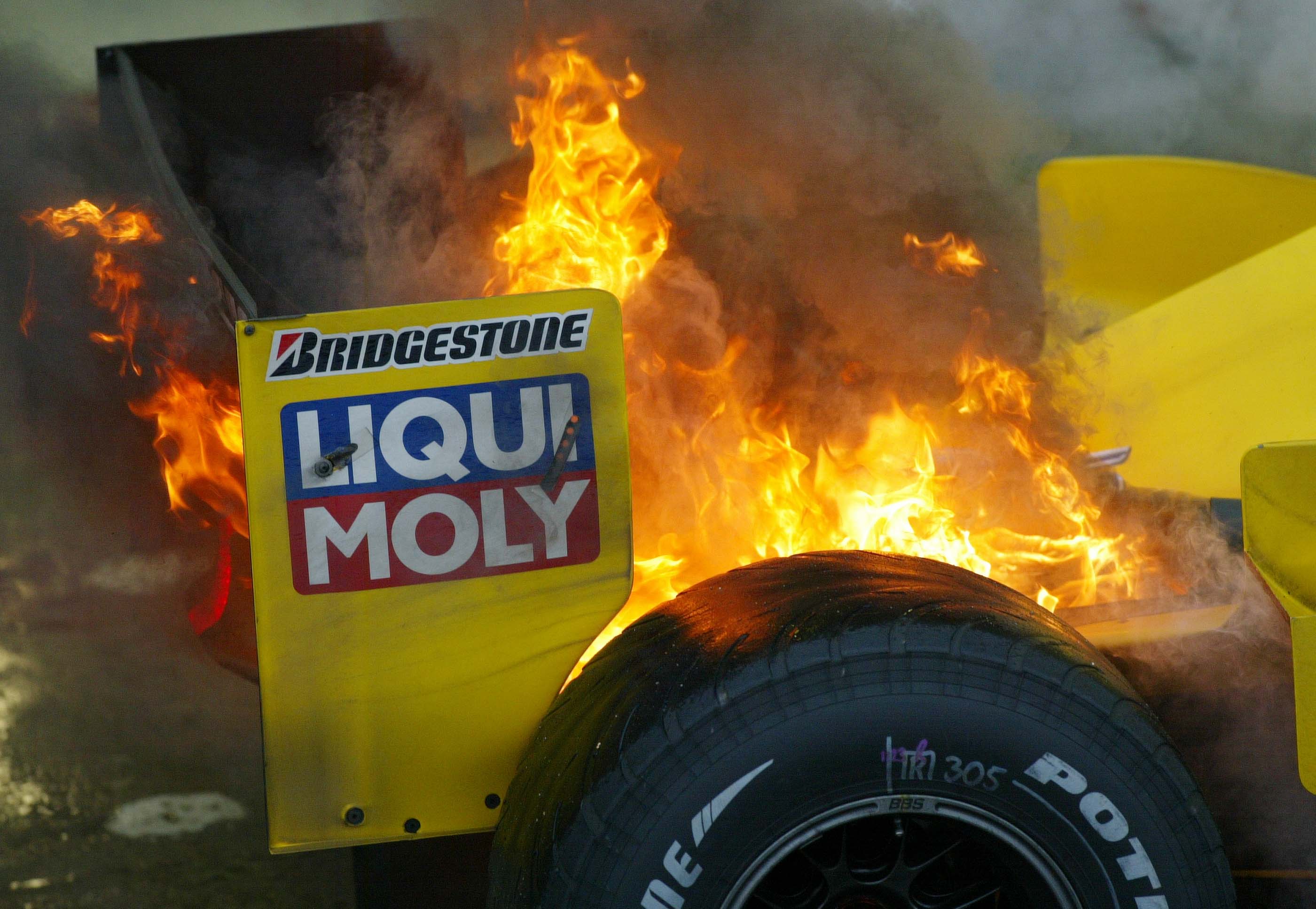
To understand how all this played out, we have to go back to a moment that seemed little more than a footnote when it happened during the eight laps of safety car running at the start of the race.
This followed a storm that hit Interlagos earlier in the day, before a start that was ultimately delayed by 15 minutes, which posed significant problems given the bizarre cost-saving rule insisting Bridgestone and Michelin could bring either intermediates or wets but not both (both chose the former).
Fisichella’s Jordan came into the pits at the end of the seventh lap to take on fuel and fresh Bridgestone intermediates. By doing so, the struggling Jordan team threw away eighth place after a strong qualifying performance on a light fuel load, with Fisichella taking the green 19th ahead only of team-mate Ralph Firman Jr, who had stopped at the end of the following lap.
Both were out, giving Panis his own hard-luck story having brimmed with fuel when he stopped at the end of the first lap. Had his race played out identically to Fisichella’s at that point and the fuel lasted, it is not impossible he’d have been in amongst it at the front
Instead, all eyes were on a dramatic battle for the leading places. Barrichello tried to play a clever game at the start, holding the field until the penultimate kink before gunning it and promptly losing the lead to McLaren’s Coulthard into the first corner.
A lap later, the second McLaren of Raikkonen passed Barrichello into Turn 1, and then repeated the move shortly after to take the lead away from Coulthard, which left the latter vulnerable. Williams-BMW driver Juan Pablo Montoya revelled in getting his Michelins up to temperature quickly to surge from seventh to take second from Coulthard around the outside of Turn 3 on lap 11 of 54.
Barrichello, battling a misfire that later cleared, dropped as low as sixth during this phase before picking his way back past Webber, who was then hassling Montoya. The Australian had qualified his Jaguar a sensational third on a relatively ‘honest’ fuel load for a two-stop race, showing he could cut it with the best on his first time in such illustrious company at the front of the grid.
This phase of the race was far calmer than what was to come, although Jarno Trulli and Ralf Schumacher did have an altercation at Turn 3 that both survived, only for the first major incident of the race to bring out the safety car again.
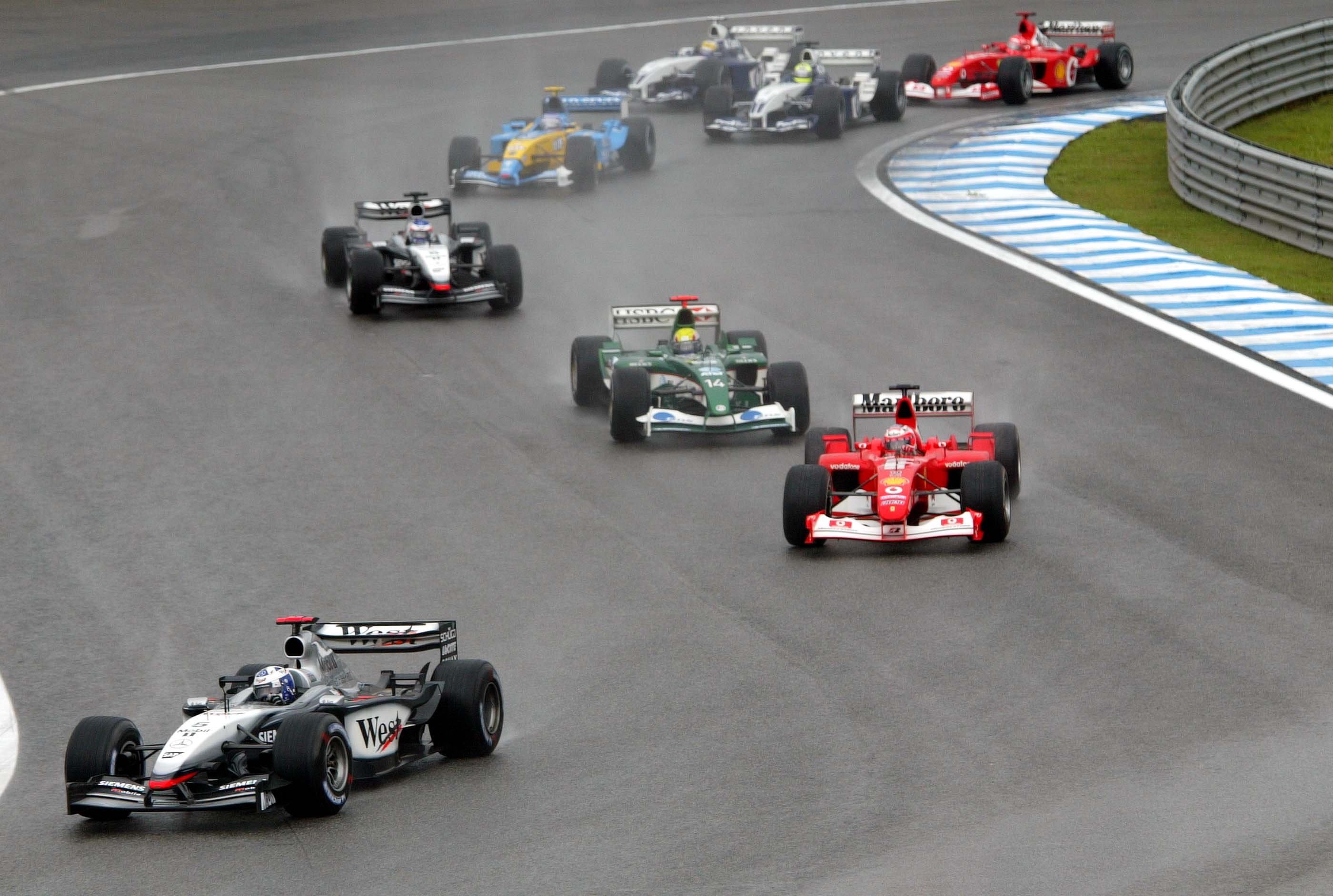
Firman, running 18th ahead of Justin Wilson – who had climbed as high as 12th before making an early pitstop – suffered a front-right suspension failure when he hit the brakes for Turn 1 on lap 18. The failure – later traced to an assembly problem on the lower wishbone of the spare car he started in – pitched him into a spin, sailing past team-mate Fisichella and into the back of Olivier Panis’s Toyota.
Both were out, giving Panis his own hard-luck story having brimmed with fuel when he stopped at the end of the first lap. Had his race played out identically to Fisichella’s at that point and the fuel lasted, it is not impossible he’d have been in amongst it at the front.
Frentzen was another of those with a hard-luck story to tell, for he started from the pits on a full fuel load and still hadn’t pitted when the race was red-flagged. He was another driver who might have been in Fisichella’s position in the final reckoning
With the safety car deployed, the majority opted to pit. The only significant exceptions were Raikkonen, who was running behind Coulthard with McLaren unwilling to double-stack, and the driver who few saw as relevant at that stage – Fisichella. Alonso, meanwhile, had to stop on consecutive laps and slid from fifth to the back thanks to his Renault team inadvertently fitting slicks at the first attempt.
PART 2 – CHAOS REIGNS
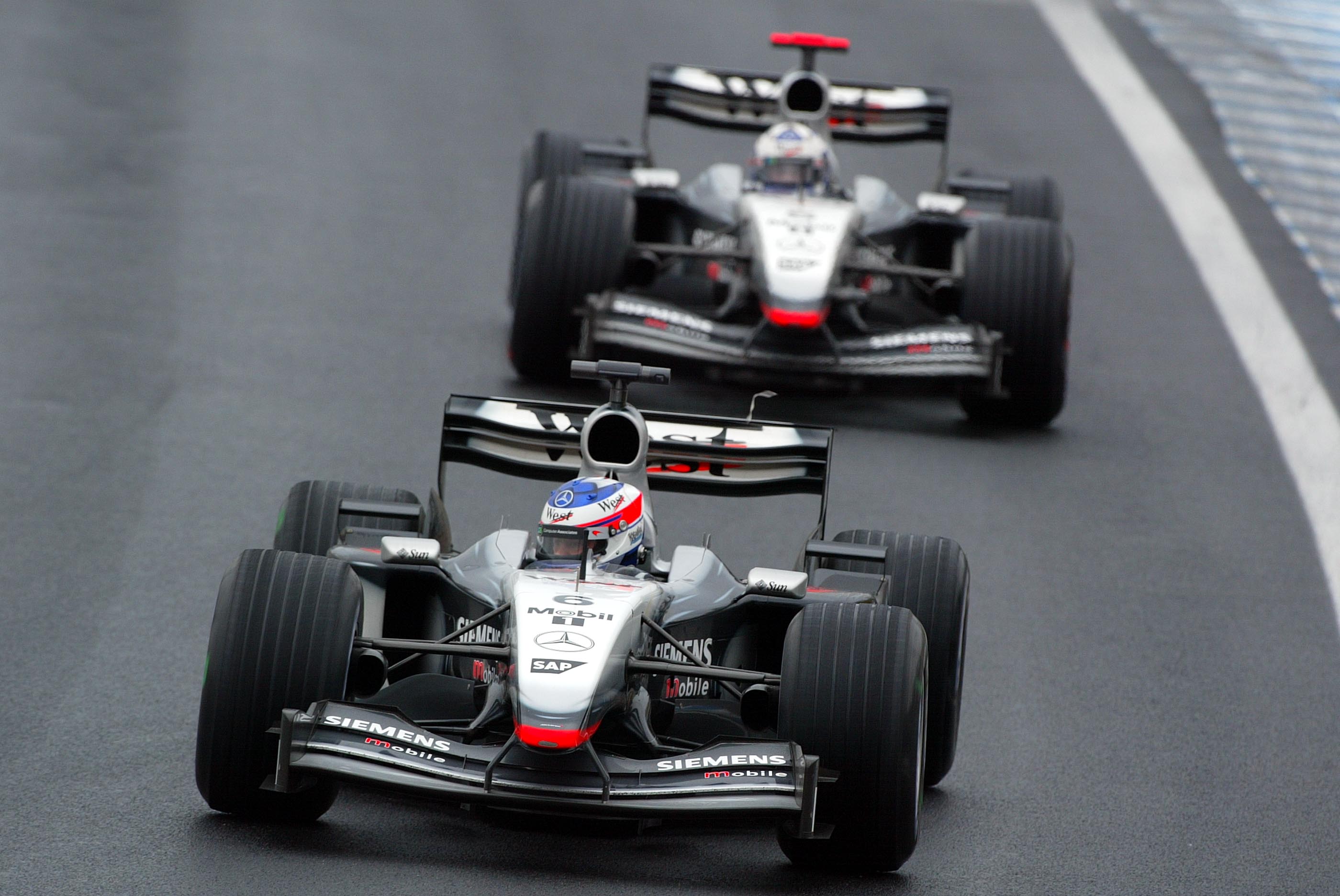
Raikkonen took the restart at the end of lap 22 of 54 knowing he needed to pull away, doing what Barrichello didn’t manage earlier by nailing the throttle out of Juncao and leaving the chasing pack in his wake. Coulthard chased ahead of Schumacher, with Cristiano da Matta’s Toyota holding an illusory fourth having not yet stopped.
Barrichello, under pressure from Montoya having passed him into the first corner, drove around the outside of the Toyota of da Matta at Turn 3 to take fourth place on lap 23. Unseen by the cameras, Heinz-Harald Frentzen spun from ninth place to the back in his Sauber at Turn 3. While he recovered to finish fifth, this made Frentzen another of those with a hard-luck story to tell, for he started from the pits on a full fuel load and still hadn’t pitted when the race was red-flagged. He was another driver who might have been in Fisichella’s position in the final reckoning.

It proved this phase of the race was just a brief interlude. On lap 25, Montoya gave us a taste of what was to come by spinning at the Turn 3 left-hander after aquaplaning in the same spot that earlier claimed Wilson. Moments later, Antonio Pizzonia joined him in the Jaguar. Two laps later, the unthinkable happened as third-placed Michael Schumacher went off at the same spot. The reason was a river running across the track that continued even as other parts of the circuit started to dry.
The safety car made its third appearance of the day, prompting Raikkonen to pit, dropping to seventh. That promoted Coulthard to the lead ahead of Barrichello, Ralf Schumacher and Webber.
PART 3 – MINARDI’S DREAM ENDS
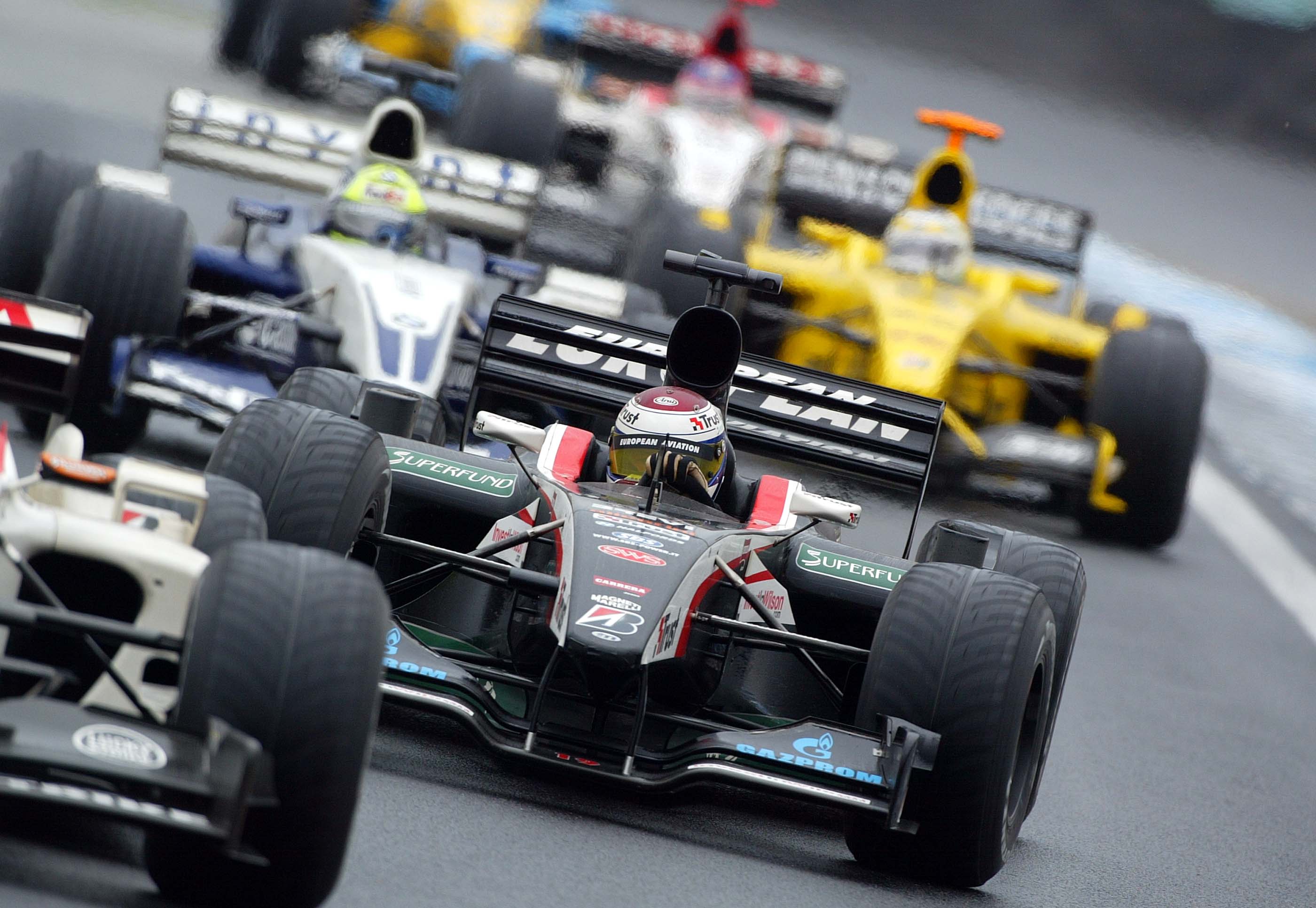
When the race restarted at the end of lap 29, Coulthard hung onto the lead but proved unable to shake off the attentions of Barrichello. The Michelin intermediates had a slightly deeper cut, as well as additional lateral grooves to create small tread blocks, so worked well when it was wetter, as well as being faster to warm up. But as parts of the track dried, the Bridgestones came into their own. This suited Barrichello, but he wasn’t going to get impatient.
Early in this phase of the race, Verstappen’s unseen and unlikely run at victory came unstuck. He became the latest to spin out of the race at Turn 3 while running eighth – one place ahead of Fisichella. Whether he could have kept the Jordan behind had he not made the mistake is a big question, but we know how good Verstappen can be in wet conditions and undoubtedly a points finish was eminently possible even if a win would have demanded perfect execution. Team boss Paul Stoddart was certainly frustrated.
The crowd was on its feet, anticipating a first home victory at Interlagos since Ayrton Senna in 1993, but it wasn’t to last
“For probably the first time in Minardi’s history, we were in a race-winning position,” said Stoddart. “People may laugh, but only those of us in the team will ever know the truth. We had the strategy but not the luck.”
The race continued under green flag conditions until lap 34, when the safety car was deployed shortly after Jenson Button crashed heavily out of fifth place at, you’ve guessed it, Turn 3. With Webber taking the opportunity to pit, this reset the race for what proved to be the final run to the finish with Coulthard, Barrichello and Ralf Schumacher in the podium positions and Raikkonen fifth behind Alonso and ahead of Fisichella.
PART 4 – BARRICHELLO TAKES CHARGE
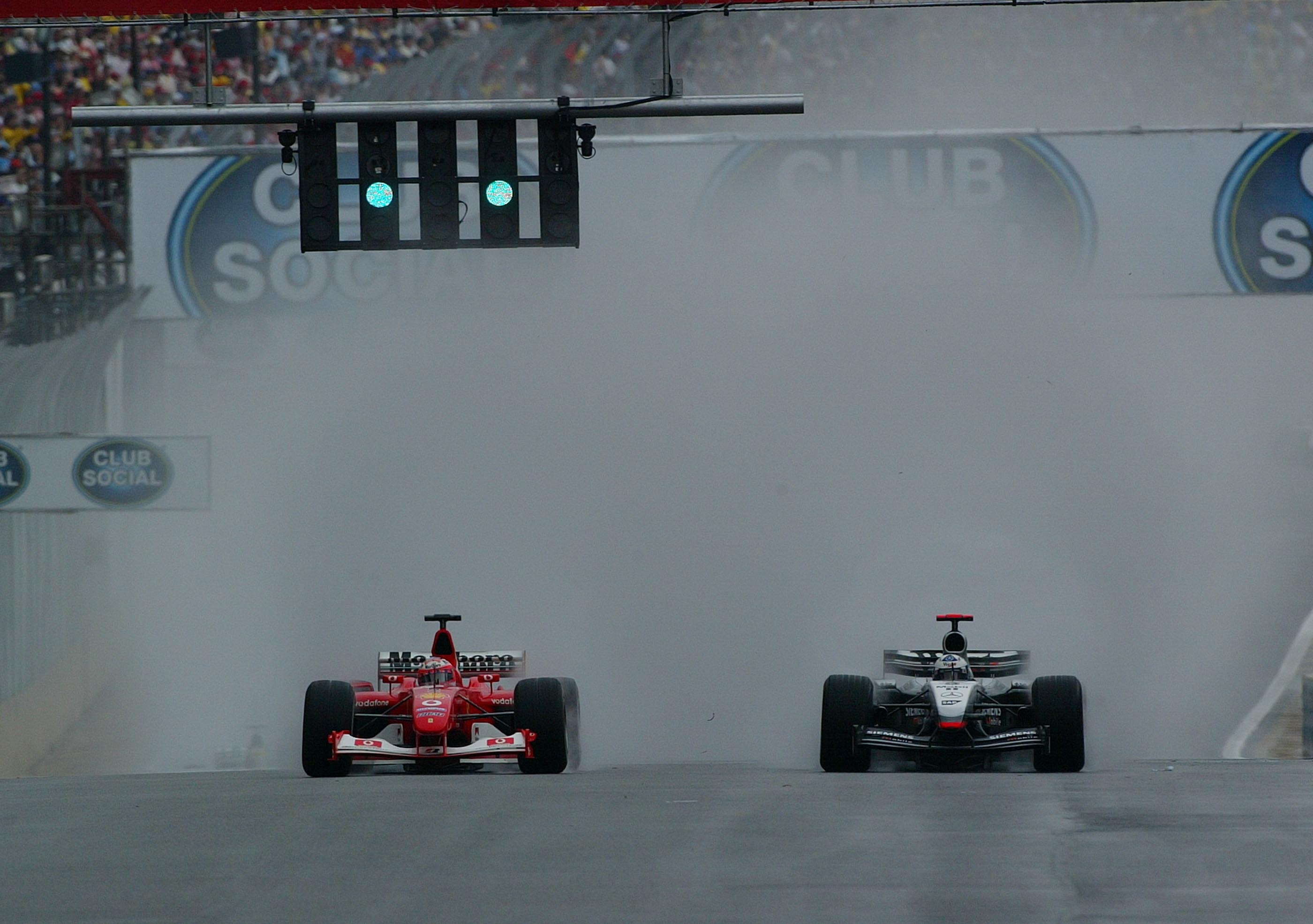
At the final restart at the beginning of lap 37, Coulthard got cleanly away while Raikkonen passed Alonso up the inside into Turn 4 next time round. He then dispatched Ralf Schumacher for third with a brilliant pass around the outside of Turn 4.
Barrichello was in no rush, but with Coulthard struggling with his front Michelins and the Bridgestone tyres coming on strong as much of the track dried – but crucially too wet in some places for slicks – a move looked inevitable. On lap 45, Coulthard ran deep at Turn 1 and Barrichello claimed the lead, immediately pulling away from the McLaren.
The crowd was on its feet, anticipating a first home victory at Interlagos since Ayrton Senna in 1993, but it wasn’t to last. Barrichello, with just one finish in the Brazilian GP to his name in 10 previous attempts, pulled over out of the Mergulho. He was out of fuel despite the data indicating he still had sufficient to complete several more laps without problem.
This handed the initiative back to Coulthard, but he had to stop for fuel and tyres at the end of lap 52. That put Raikkonen in command, but he was struggling with his Michelins and under intense pressure from the flying Fisichella in the Bridgestone-shod Jordan. Raikkonen ran wide at the Mergulho left-hander and Fisichella seized his chance to take the lead.
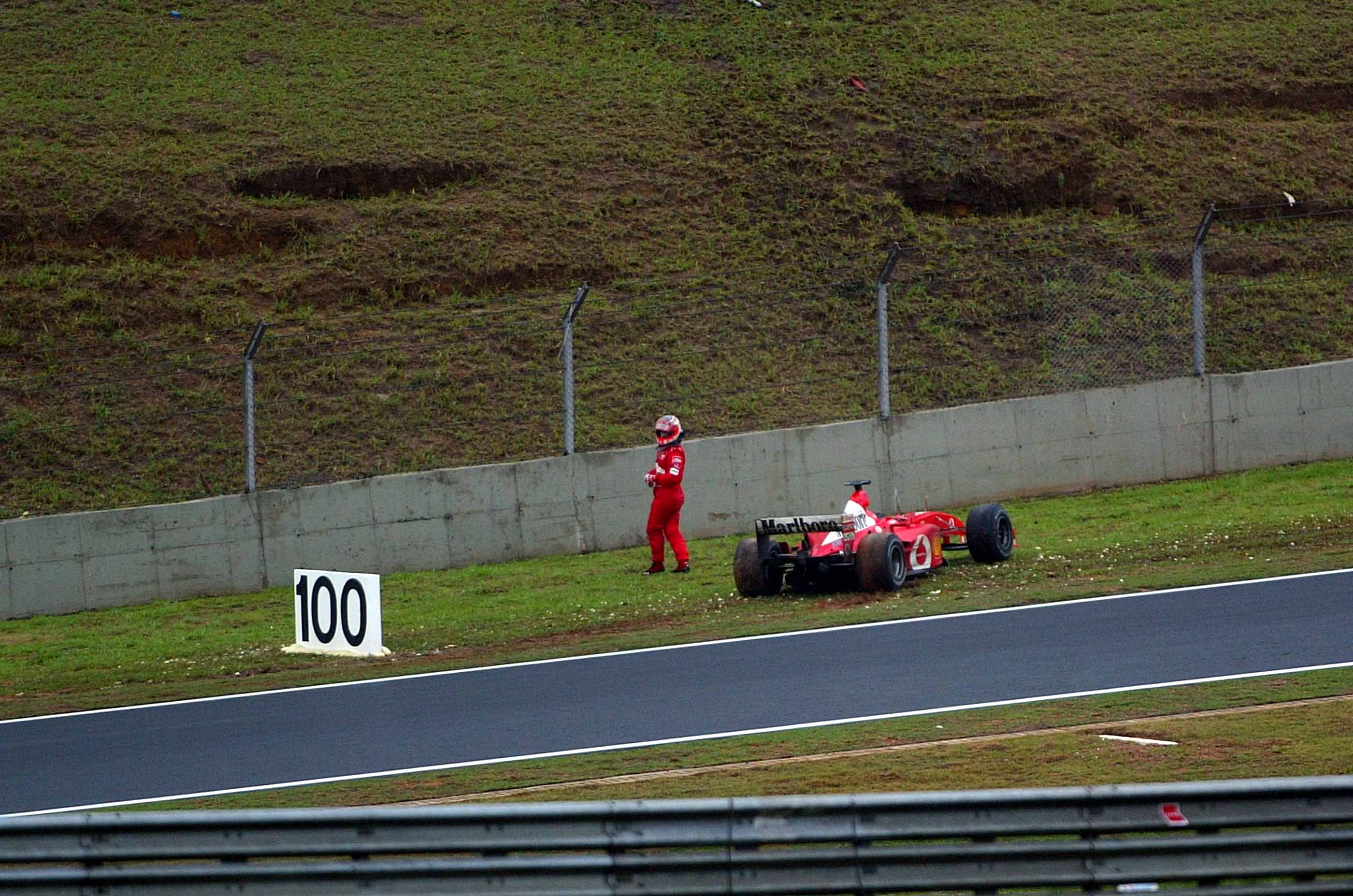
“With the tyres [Michelins], after I had problems with them, they came back and then they went off again,” said Raikkonen. “It was a bit too slippery and I lost the rear grip in the middle of the corner. I just ran wide and Giancarlo got past me.”
The Jordan team celebrated, confident the race wouldn’t be restarted given it had reached three-quarters distance. But as Fisichella’s car caught fire in parc ferme thanks to the hot exhaust igniting oil, the timing screens reset and Raikkonen was the winner
Then came the moment that brought the race to a premature conclusion. Webber, running seventh having made a second stop, was cooling his tyres on a damp patch on the run to the finish line. But his tyres weren’t in great condition and he was pitched into a spin, hitting the wall on the outside of the track and showering the circuit in debris as he bounced across to come to rest on the inside wall.
One piece of debris was his front-left wheel, which came to rest in the middle of the track. Alonso, running third ahead of Coulthard at this point despite earlier serving a drive-through penalty for passing Webber under yellow flags, collected it next time round and was pitched heavily into the wall. The red flag flew immediately, with Alonso needing medical attention after getting out of the car but escaping with a gash to the leg.
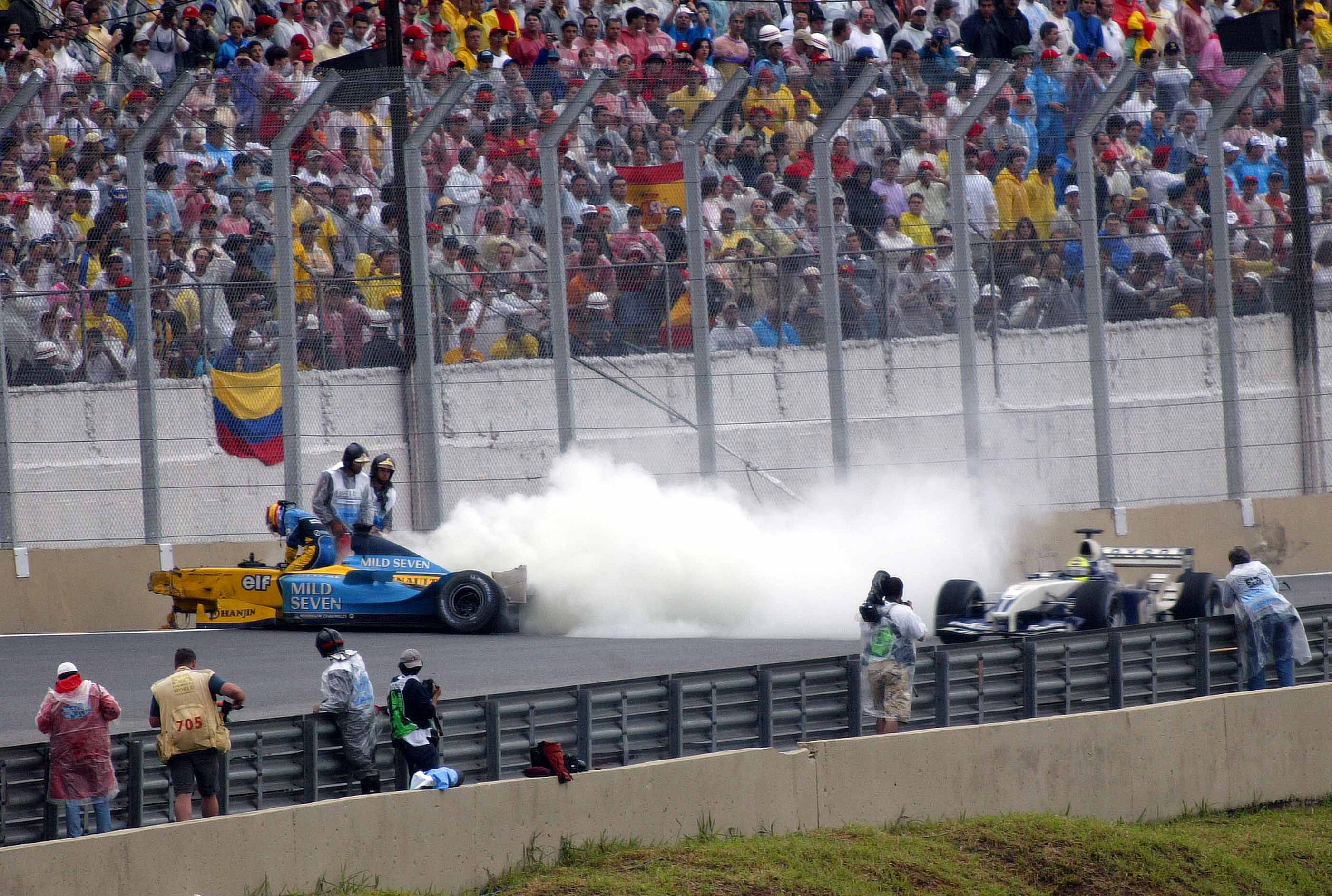
The Jordan team celebrated, confident the race wouldn’t be restarted given it had reached three-quarters distance. But as Fisichella’s car caught fire in parc ferme thanks to the hot exhaust igniting oil, the timing screens reset and Raikkonen was the winner.
Alonso completed the podium, which he wasn’t able to stand on due to requiring medical attention, with Coulthard, Frentzen and Jacques Villeneuve completing the top six. With points this season paid down to eighth place, Ralf Schumacher and Jarno Trulli were the final scorers.
POSTSCRIPT
It took six days before Fisichella was declared the winner, which followed an FIA investigation. Fisichella had completed his 55th lap a few seconds before the red flag was flown. This means the countback should have been made to lap 54, on which the Jordan driver had overtaken Raikkonen.
The timing screen system had initially made this adjustment automatically, before one more lap was manually taken out because it wasn’t realised that the system had already done this. The result was a temporary victory for Raikkonen.
But justice was eventually done and Fisichella really did take one of F1’s most unlikely victories. On a day when so many could have won it, it was the Italian that did so. And while luck played a part, without the Jordan team picking the right strategy and Fisichella overtaking Raikkonen when he did, it would never have happened.





